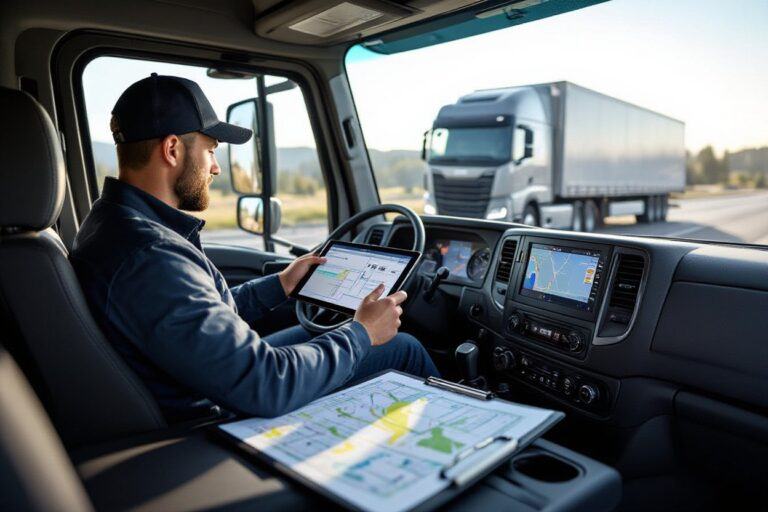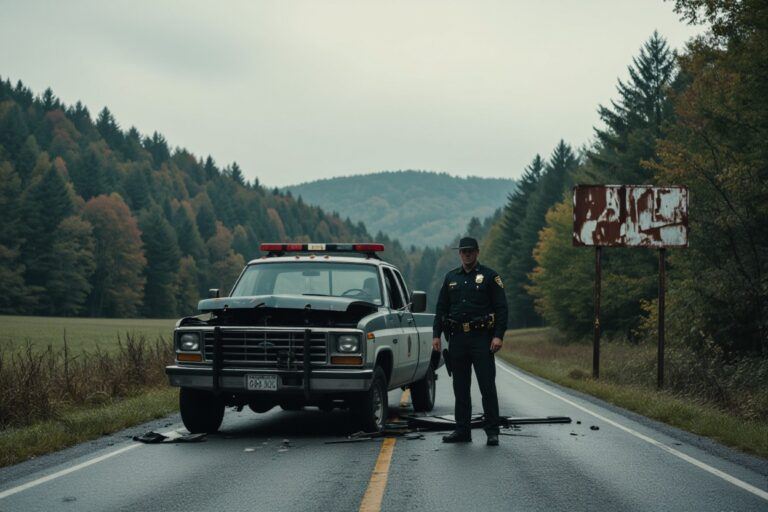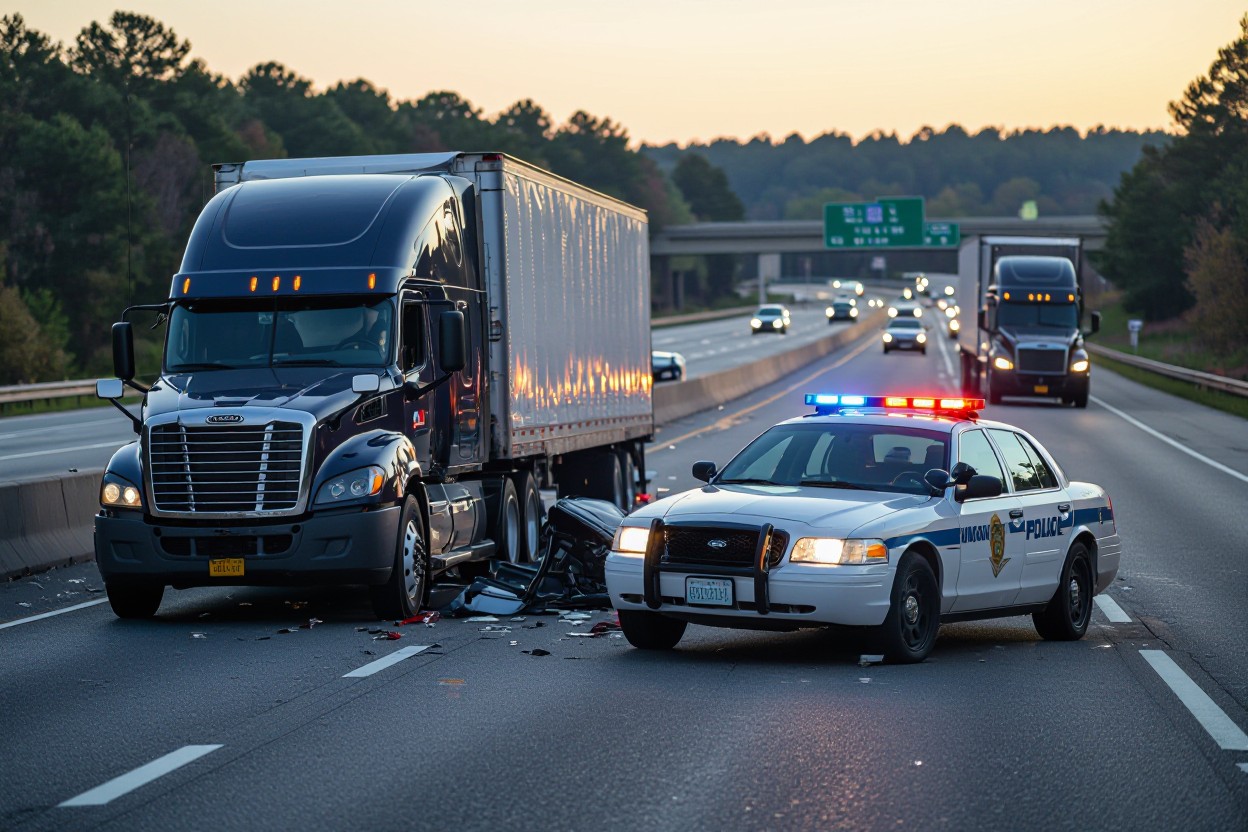
A truck driver lost his life in a tragic crash on Route 460 in Sussex County, Virginia, when a load cover unexpectedly came off another semi truck and struck his vehicle. According to Virginia State Police, this dangerous event took place shortly before 3 p.m. on July 10, 2025.
You should understand that the driver, Keith Michael Loback, 64, was operating a 2020 Freightliner tractor trailer loaded with car parts westbound when the load cover or metal-framed tarp from an eastbound semi truck detached. This loose load cover struck his windshield on the driver’s side, causing him to become unconscious instantly.
After the impact, the Freightliner veered out of the westbound lanes, crossed the eastbound lanes, and crashed into the treeline, hitting several trees. Sadly, Loback succumbed to the injuries he sustained in the crash. This highlights how a seemingly minor safety lapse on one vehicle can have fatal consequences for others around you.
Virginia State Police quickly located the eastbound truck driver responsible for the unsecured load cover and have since launched a criminal investigation. This response underlines the seriousness of the incident and the importance for you to secure your cargo properly at all times to prevent such accidents.
Incidents like this make it clear why load security and safety compliance are non-negotiable in your line of work. Protecting yourself and others on the road depends on your attention to detail and adherence to regulations.
The Role of Load Securement in Trucking Safety
Your safety on the road depends greatly on how well loads are secured on trucks. When load covers or tarps are not properly fastened, they can become deadly flying debris, as seen in the recent fatal crash on Route 460 in Virginia. Ensuring that every cover and tarp is tightly secured not only protects you but also other drivers sharing the highways. Proper load securement prevents unexpected hazards that can cause loss of control or serious accidents, making it an vital practice in maintaining trucking safety.
A Breakdown of the Collision Sequence
Understanding the chain of events leading to accidents can help you avoid similar dangers. In this case, a load cover came loose from an eastbound semi truck and struck the driver’s side windshield of a westbound tractor trailer. The impact rendered the driver unconscious instantly, causing his truck to veer off the road, cross opposing lanes, and collide with trees. This sequence highlights how a single unsecured item can rapidly escalate into a deadly crash, emphasizing why you must always ensure your load is secure to protect yourself and others on the road.
Delving deeper, the load cover or metal-framed tarp detachment created a blind threat that left the Freightliner driver, Keith Michael Loback, with no chance to react. The immediate loss of consciousness following the windshield strike shows how severe the impact was, causing the tractor trailer to cross multiple lanes and ultimately crash into the treeline. This emphasizes the extreme danger loose equipment poses, not just as an obstacle but as a direct cause of driver incapacitation and fatal collisions. You should treat securement as a lifesaving measure, knowing that a lapse could cost a life instantly.
The Criminal Investigation Launched by Virginia State Police
Virginia State Police have initiated a criminal investigation after a load cover detached from an eastbound semi truck, striking the windshield of a westbound Freightliner and causing a fatal crash. The eastbound truck driver was located the same night, and authorities are thoroughly examining the circumstances surrounding the incident. As you follow this case, know that the investigation aims to determine if negligence or violations contributed to the tragic death of Keith Michael Loback, who lost his life after his vehicle veered into the treeline upon impact.
Potential Consequences for the Eastbound Truck Driver
You should be aware that the eastbound truck driver involved faces significant legal and professional consequences due to the load cover detachment. If found responsible, the driver could face criminal charges, fines, and possible suspension or revocation of their commercial driving license. This incident underlines how equipment failure or improper securing of loads can lead to severe penalties and affect your career in trucking.
Beyond legal ramifications, you may face civil liability claims from the victim’s family, which can include substantial financial damages. Additionally, trucking companies linked to the driver could face increased scrutiny, impacting insurance rates and business reputation. Ensuring your load is properly secured is not just about avoiding fines, but about protecting lives and maintaining your career in this demanding industry.
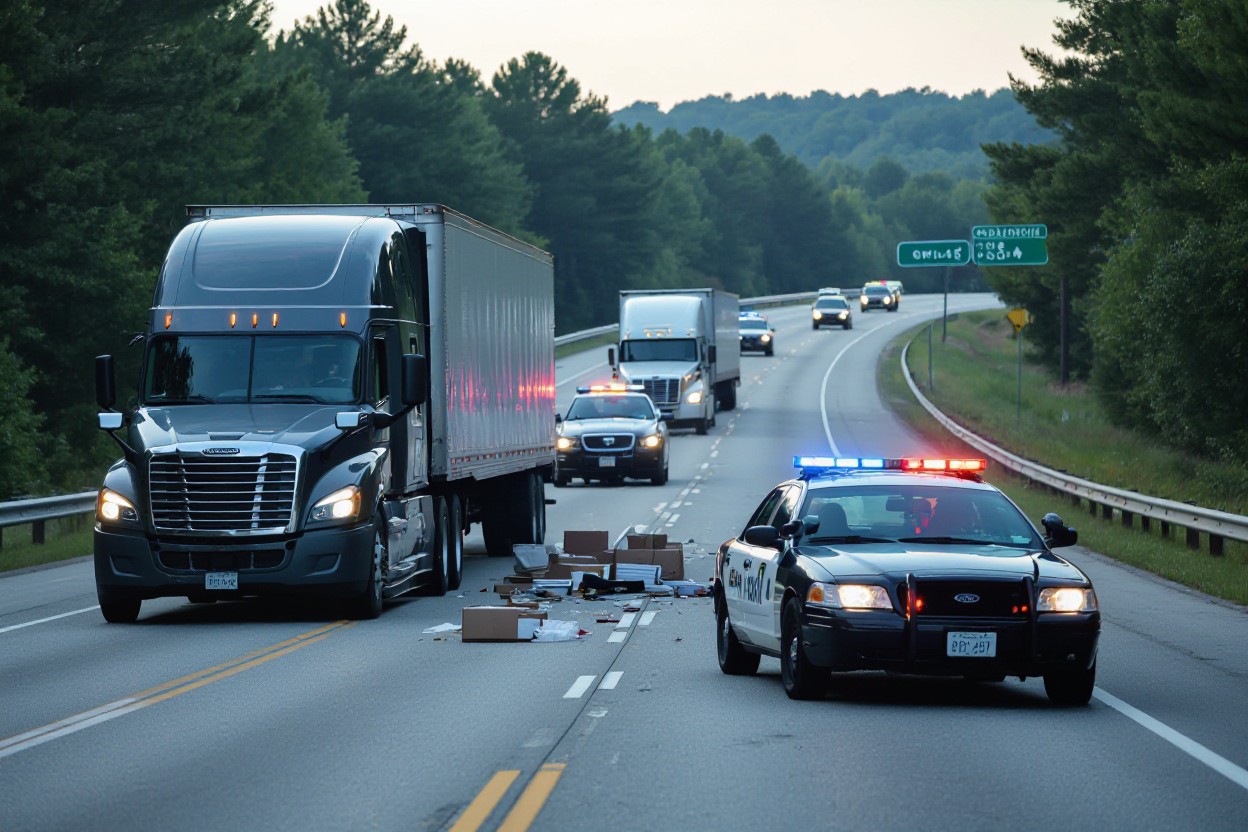
Historical Context of Load-Related Accidents
Load-related accidents have long posed significant risks on roadways, often resulting from improperly secured cargo like tarps or covers detaching at high speeds. Incidents similar to the tragic crash involving Keith Michael Loback reveal how these flying objects can cause severe damage, including windshield impacts that lead to loss of driver control. Over the years, authorities and industry stakeholders have tracked such accidents to understand patterns and enhance safety measures. Understanding this history helps you appreciate the ongoing challenges in maintaining secure loads to protect drivers and others on the road.
Recommendations for Policy Improvements in Load Securement
To enhance your safety and that of others, policies must strengthen load securement standards, emphasizing routine inspections and robust fastening systems. Law enforcement agencies have already launched criminal investigations in incidents like the recent Virginia crash, highlighting the need for stricter enforcement. You should advocate for mandatory training focused on securing metal-framed tarps and load covers, because when these covers dislodge, they become hazardous projectiles that can cause fatal crashes.
Improving load securement policies involves implementing stringent inspection protocols before and during trips, requiring durable securing equipment designed to withstand high speeds and weather conditions. You should push for these enhanced measures to reduce the chances of load cover failures on highways. Additionally, increasing penalties for violations and supporting technology that monitors load stability can further lower incident rates. By prioritizing these policy improvements, you contribute to safer roads and prevent accidents like the fatal July 10th crash where a load cover struck a Freightliner’s windshield, causing the driver to lose control and ultimately lose his life.
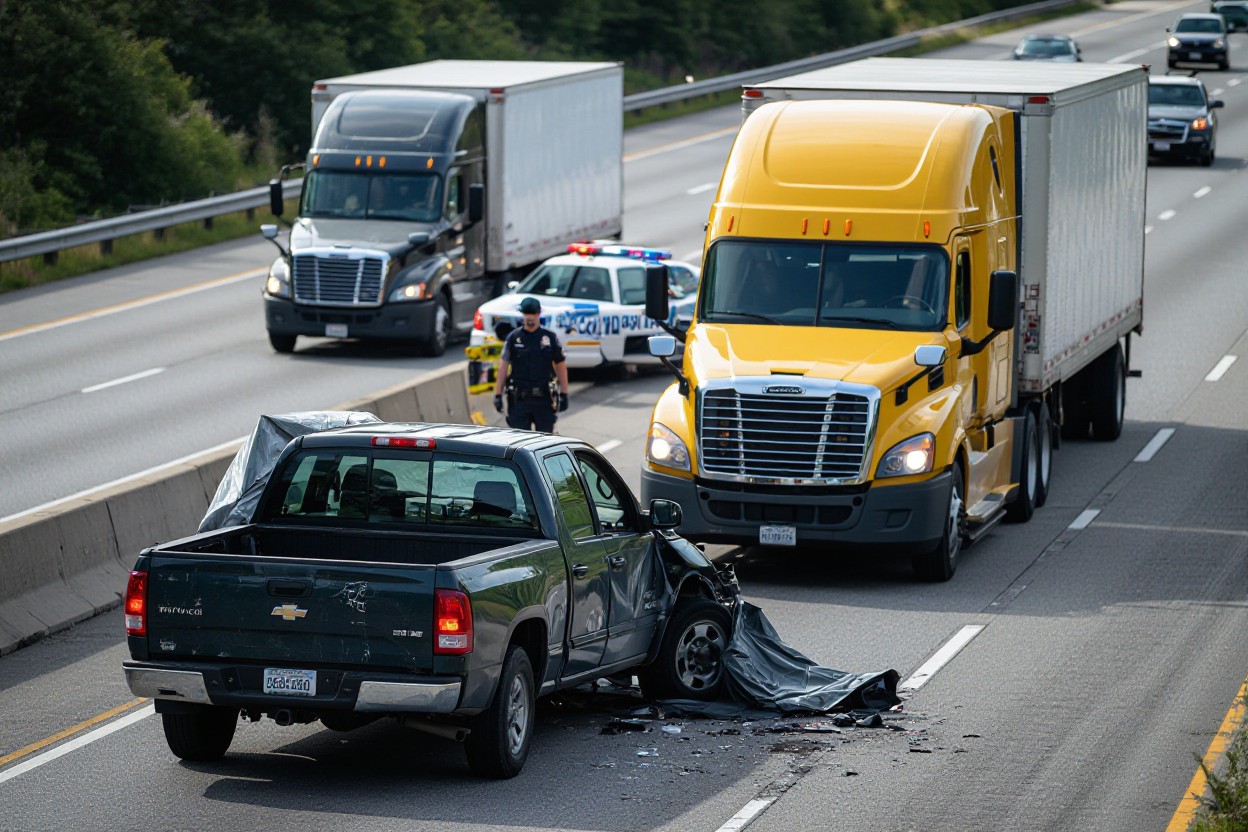
The Reaction from Trucking Associations and Advocacy Groups
Trucking associations and advocacy groups have expressed deep concern over the fatal crash caused by a loose load cover on Route 460. They emphasize the need for stricter regulations on securing loads to prevent incidents like this one, where an unsecured metal-framed tarp struck the windshield and led to a driver’s death. These organizations are urging you, as a driver or fleet manager, to prioritize load safety and compliance to protect lives and reduce avoidable tragedies on the road.
Driver Safety: Industry Leaders Weigh In on Prevention Strategies
Industry leaders stress that incidents like this highlight the importance of comprehensive load securement and proactive hazard awareness. You should focus on regular inspections, proper fastening methods, and staying informed about potential risks from passing vehicles. Implementing advanced driver assistance systems and promoting better communication between drivers can significantly reduce occurrences of dangerous debris-related crashes, enhancing your overall safety on the road.
When you consider prevention strategies, it’s important to understand that load securement failures remain a leading cause of roadside hazards. The Virginia crash, where a load cover detached and struck the Freightliner’s windshield, shows how suddenly your safety can be compromised. As a driver, you’re encouraged to conduct thorough pre-trip and en route inspections, ensuring that tarps and covers are tightly secured and checked consistently. In addition, industry leaders advocate for investing in emerging technologies like collision avoidance systems and roadside monitoring tools, which can alert you to potential dangers ahead. By combining vigilant load management and technological aids, you can help lower your risk and contribute to safer highways for everyone.
Summing up
On the whole, you need to be aware of the unexpected dangers on the road, such as debris from other vehicles that can cause severe accidents. The tragic loss of truck driver Keith Michael Loback highlights the risks you face when driving near large trucks. Staying vigilant and maintaining a safe distance can help protect your life and others. Authorities continue to investigate this incident, emphasizing the importance of proper load securing to prevent similar tragedies. Your attention and cautious driving are vital to navigating these hazards safely.

